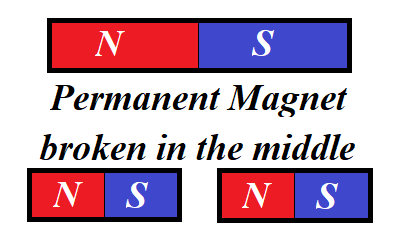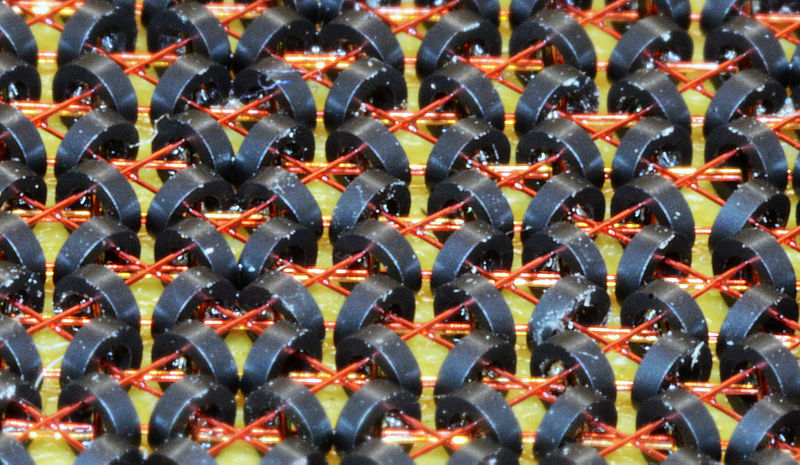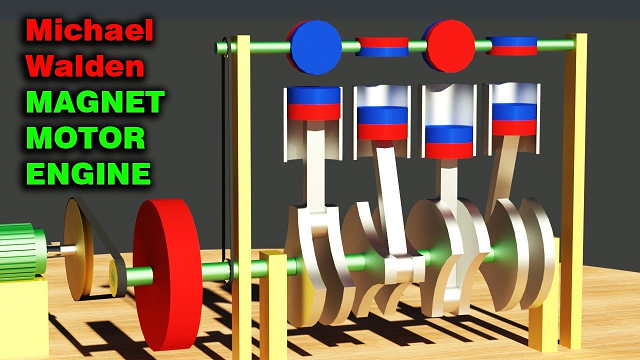Notes to a video lecture on http://www.unizor.com
Magnetism - Practical Aspects
Here is a list of a few cases where permanent magnets of different kind are used.
A magnetic screwdriver.
Refrigerator door.
Magnetic letters.
Bracelets with magnetic closure.
Compass.
Magnetic toys.
Different machinery uses magnets (e.g. large disk magnets to pick up metal junk).
Medical instruments (e.g. MRI - Magnetic Resonance Imaging).
In phones and headphones.
In all kinds of motors and generators.
In televisions.
In computers.
Permanent magnets occur in nature. A mineral magnetite is such a permanent magnet. It's black and shiny, when polished. The chemical composition of magnetite is iron oxide, which means that its molecule contains only atoms of iron and oxygen, the formula is Fe3O4.
Two pieces of magnetite will attract each other if faced by
opposite poles (North of one to South of another) and repel each other
when positioned facing each other by the same pole.
Magnetite attracts certain metals, like iron.
A piece of magnetite, if hanging on a thread or free floating in
water on a wooden plate will always turn along a meridian, thus people
used it in navigation before they invented a compass.
The naturally occurring magnetite is quite a weak magnet. Much
stronger permanent magnets are created artificially by melting together
certain metals. One of the strongest artificial magnets are made by
combining iron, neodymium and boron into an alloy called neodymium magnets.
Artificial magnets can have any shape with location of the poles chosen
by a manufacturer. For example, a ring magnet can be created with a
North pole on the outside circumference of a ring and South pole on the
inside circumference.
Consider a bar magnet with poles on its opposite sides.
Let's use an iron nail as a probe object to measure the force of attraction at different points on a magnet.
The strongest force of attraction will be at the ends of a bar magnet,
at its poles. If we move a nail from one end of the magnet to another,
the strength of attraction will diminish to zero at the middle, then
again will rise to its maximum on an opposite pole.
The midpoint of a bar magnet has no attracting strength at all.
Interestingly, if we break a bar magnet in the middle, each half will
not be a single pole magnet, single pole magnets don't exist. Each half
will have two poles, one old and the new one at the point we broke the
original magnet. Each new smaller magnet will be weaker than original.

Artificial magnets can be permanent or temporary.
Permanent magnets do not change their magnetic properties. Temporary
ones can be magnetized, when are near another permanent magnet, or
demagnetized, when there is no other magnets nearby. Plain nails and
paperclips have such a property. Their polarity depends on the position
of the other permanent magnet. Another example is electromagnets that
will be discussed later on in the contents of a connection between
electricity and magnetism.
There are artificial magnets that, after being magnetized by electric
impulse, retain their magnetic properties, including the polarity. At
the same time, exposed to another impulse, they can lose their magnetic
properties or change the polarity. This type of magnets were used in the
memory of the first computers with each bit of information (1 or 0)
stored as a magnetization of one ferrite ring.

Artificial magnets can be not only in some solid shape, but also form a
thin magnetic layer on a surface of some other material. This is how
magnetic tape and magnetic disks were created, both used extensively in
the computers. The principle of work of these memory devices is based on
the properties of the thin magnetic layer to retain the state of tiny
magnets this layer contains. Special devices can "write" information on
the magnetic layer by temporary magnetizing the tiny magnets of the
layer and "read" this information.
Another example is injecting a magnetically-sensitive liquid into a
tumor and, using a powerful magnet, heat it up to destroy the tumor.
The fact that permanent magnets are permanent and, seemingly, represent
an unlimited source of energy, prompted many people to construct a
device that would exploit this property to create a perpetual movement
and use it to generate unlimited amount of power.
Some of these devices did move for a long time. However, they contradict
the principle of energy conservation for a closed system and, sooner or
later, friction and other forces would stop it.
Here is a good example of such a device

https://www.youtube.com/watch?v=UqlPePYgdg4


1 comment:
This is excellent information! I want to say thanks for your time for this great blog, Keep it up injection neodiymium magnet
Post a Comment